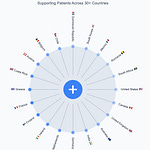Electronic Health Records (EHRs) are often heralded as a transformative tool in healthcare. They are envisioned as the ultimate tool for streamlining medical services, promising efficiency and comprehensive patient care. However, the reality reveals a more intricate picture.
Listen to this episode on Apple, Spotify, and YouTube.
Expectation vs. Reality
At first glance, EHRs seem like the perfect solution—a master digital library where all patient information is neatly organized and accessible at the touch of a button. While this concept is appealing, its execution is fraught with challenges. EHRs often contain data that is incomplete, inconsistent, or even inaccurate. This digital goldmine that promises to enhance healthcare can sometimes do quite the opposite.
EHRs Are a Little Bit Racist
One of the most significant problems plaguing EHRs is the presence of systemic biases that are often entrenched within the healthcare system.
Gender Bias: Studies indicate that women's pain is often underestimated compared to men's.
Racial Bias: Black patients are systematically undertreated for pain when compared to white patients, with some healthcare providers endorsing false beliefs about racial differences in pain perception.
Obesity Bias: Frequently, physicians attribute a wide array of health conditions to a patient's weight, which can result in overlooked or delayed diagnoses for conditions unrelated to obesity.
These biases significantly affect the data recorded in EHRs, skewing the representation of patient populations and impacting the quality of healthcare delivered.
The Domino Effect of Distorted Data
The biases inherent in EHRs do more than just affect individual patient care; they also warp the larger data landscape. This results in underrepresentation, where certain groups, like rural communities with limited healthcare access, are absent from the data, leading to skewed depictions dominated by urban populationsa.
Distorted associations are another issue. EHRs might misleadingly present a strong connection between particular medications and improved heart health. However, this observation might overlook confounding socioeconomic factors—such as the correlation between the medication's cost, patient insurance coverage, and better health outcomes—resulting in potentially inaccurate prevalence estimates.
Tipping the Scales Towards Data Equity
With these issues in mind, a critical approach to EHR data is essential. Understanding these limitations enables researchers and healthcare professionals to harness the full potential of EHRs while navigating their pitfalls. The goal is to improve healthcare for everyone, especially those underrepresented or misrepresented in data.
Behind every EHR data point lies a real person whose health and well-being might hinge on its accuracy. The biases and inaccuracies woven into these records require us to remain vigilant, asking critical questions about what might be missing or misrepresented. By keeping these limitations in mind, we can better use EHRs to improve healthcare for everyone, ensuring that no patient is left behind.









